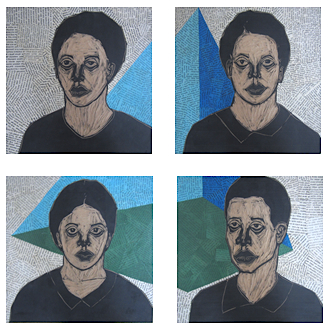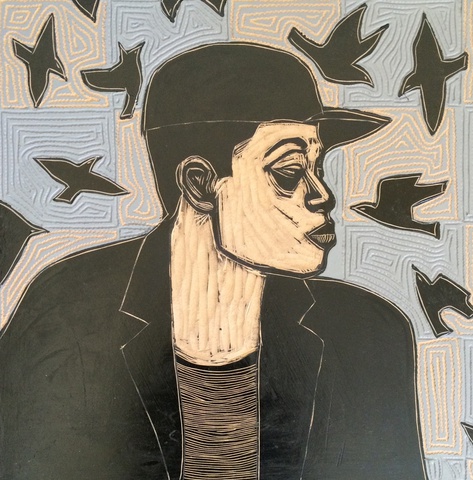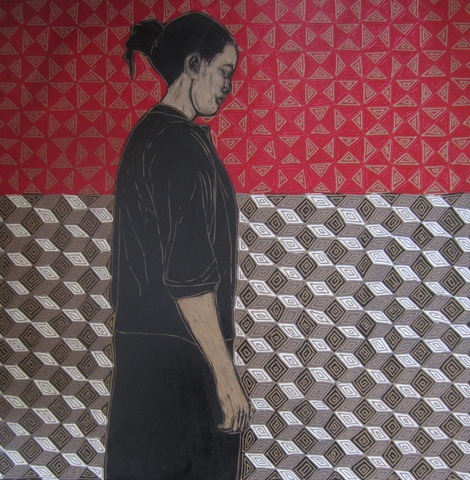
Ephrem Solomon is one of the 14 artists in “What about Africa?”, Witteveen Visual Art Centre, Amsterdam.
Through February 27, 2016
Untitled, 2015.
About:
Ephrem Solomon portrays the distance between the governing and the governed, fleshing out tender subjects whose lives are marked by a lack of political agency and meaning. Solomon’s mixed media layering of human experience in his native Ethiopia are descriptive images of everyday life, that which is neither extraordinary nor uncommon. However, these seemingly mundane objects such as the artists’ signature chair and slippers are in fact catalysts in the elaboration of a broader political story. Unpacking the artist’s anecdotal imaginings, the emergence and reemergence of Solomon’s ‘Untitled’ characters, solemn-looking men and women, allude to the negotiation of will in the face of immobility and oppression. Suddenly, the chairs, slippers, and paper clippings become the characters of a personal narrative, recurring in meaningful ways as if torn from the pages of the artist’s own diary.
Life vs Time, 2015.
The social and political tensions that underline Solomon’s explorations of Ethiopia’s tensions are not overt. Regional instabilities rooted in inherited hierarchies could well be their concern, or might it be the swelling religious tensions that continue to pressurise rural communities. In Solomon’s gentle woodcuts, the ambiguity of location, which is often flattened, neutralised and nondescript, reveals nothing except the artist’s apparent refusal to illustrate or oversimplify the complexity of his environment. Upheaval and displacement play a significant role in the highly polarised rhetoric of Ethiopian politics, especially in the behaviours and mobilisations under ethnic federalism. Seemingly conflicting interests of traditional hierarchies, divided by generational and gender lines, have lead to systematic oppressions and inequalities based on historic ethnic affinities.
Untitled, 2015.
Untitled, 2015.
Plain, chequered and patchwork surfaces form the backgrounds for his signature slipper (The Political Game, 2013) and chairs (Untitled 2, 2013), which refer to the ways and manners of Ethiopian society. Here, the underutilised object becomes an allegory for the unfulfilled lives of the citizens who appear to be doing nothing more than waiting. In Solomon’s woodcuts the isolation of the human figure and his or her surroundings is often reflected in monochromatic tones. In his depictions of inanimate objects, the absence of the body from chairs, and the removal of feet from several pairs of slippers suggest a loss of presence. Solomon’s ‘Untitled Lives’ are local in scale, relating specifically to the city of Addis Ababa, yet they could have been produced anywhere. These observations reveal more than a political tension but rather a state of being at odds with a system beyond one’s control.(text website Saatchi)



